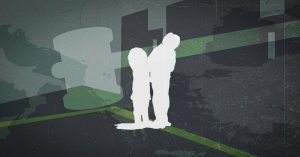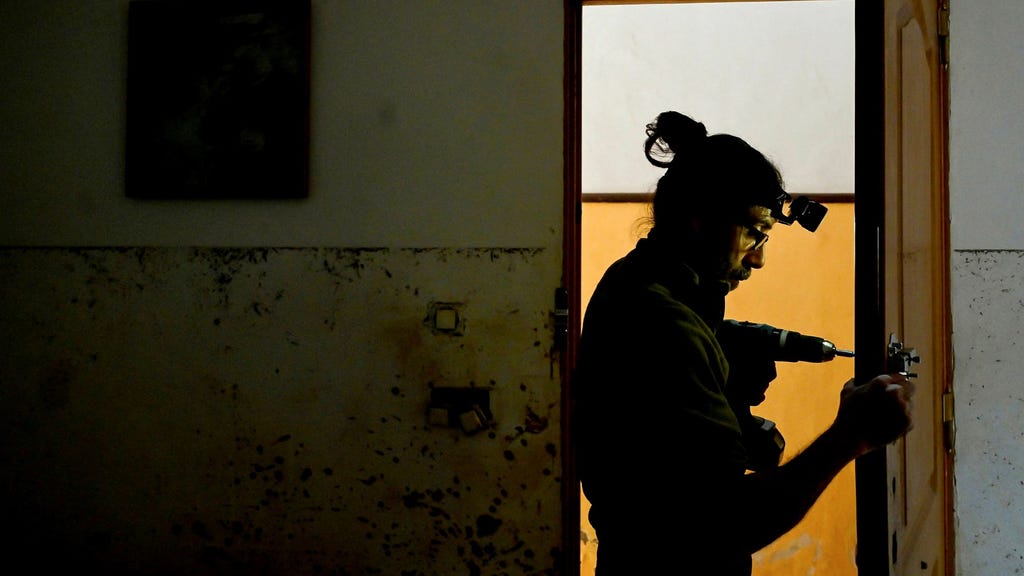The author recounts a humorous and self-deprecating anecdote about being locked out and the subsequent eight-hour ordeal of watching a locksmith, adorned with jangling tools, work his magic. This experience triggers a reflection on the author’s ingrained discomfort around handymen, a feeling he believes is shared by many men. He adopts a deferential stance, feigning understanding to mask his profound ignorance of practical matters, a coping mechanism mirrored by his friend who removes his glasses in the presence of tradespeople to appear less intellectual and more masculine. This shared insecurity, the author argues, stems from a generational shift away from practical skills. His grandparents toiled on the land, his mother worked in an office, and he, a writer, reviews books. This trajectory, he fears, signifies a declining inheritance of practical knowledge, evidenced by a friend who uses adhesive putty to hang pictures for lack of a hammer.
The locksmith’s story further illuminates the scarcity of skilled tradespeople. Companies are aggressively recruiting vocational students with lucrative offers, even before they graduate, highlighting the desperate demand for their skills. This shortage echoes warnings from industry bodies and business organizations predicting a societal crisis due to the lack of skilled workers. The author draws a parallel between these recruitment tactics and those of criminal gangs, underscoring the intense competition for skilled labor. He observes advertisements desperately seeking tradespeople, reminiscent of personal ads, further illustrating the acute shortage. This scarcity is felt acutely in the author’s own home, a showcase of unfinished, tax-deductible repairs – flickering switches, loose bathroom sealant, bare walls awaiting pictures, and cracks needing patching. He has adapted to this state of disrepair, choosing a form of domestic blindness, or at least, significantly impaired vision.
The author’s attempts to hire tradespeople are thwarted by their reluctance to undertake ”small jobs,” tasks that feel insurmountable to him. He tries to explain that his perception of these jobs differs drastically, but finds no one willing to engage in philosophical discussions of perception. The narrative takes a self-critical turn as the author confronts his perceived helplessness, inadequacy, and unmanliness – a stereotypical image of an intellectual adrift in the practical world. He identifies as a creative individual, yet the prospect of assembling a simple shelving system fills him with existential dread. This self-deprecating humor reveals a deeper anxiety about his lack of practical skills.
Just as the narrative seems to descend into a spiral of self-flagellation, a surprising twist emerges. A fellow writer friend, also a lover of high culture, has become enamored with home improvement, a transformation with unexpected consequences. This friend now finds greater satisfaction in the precision of drilling and screwing than in reading literature, even dismissing the author’s own literary contributions in favor of the meditative process of choosing the right size plug and analyzing wall materials. This newfound passion has rendered him indifferent to his primary profession of writing and reading, completely consumed by the allure of DIY. He is, the author observes, a prodigy in limbo, caught between careers.
This unexpected turn provides a moment of self-awareness and acceptance for the author. Observing his friend’s complete immersion in the world of home improvement, he experiences a sense of relief and gratitude for his own ineptitude. His inability to handle practical tasks absolves him from the choice his friend now grapples with: the allure of tangible creation versus the intellectual pursuits of reading and writing. This realization offers a humorous and ultimately positive resolution to the author’s self-deprecating narrative. He finds solace in his limitations, recognizing that sometimes, it’s okay to be bad at something, freeing him from the internal conflict between practical and intellectual pursuits.
The author’s journey from locked-out frustration to philosophical musing on his practical incompetence is interwoven with social commentary on the growing divide between intellectual and practical skills. The narrative highlights the increasing demand for skilled tradespeople, the societal implications of this shortage, and the personal anxieties experienced by those who lack practical abilities. The author’s self-deprecating humor and relatable anecdotes transform a simple story of a locksmith into a broader reflection on societal trends, generational shifts, and the unexpected paths life can take. The concluding anecdote about his friend provides a contrasting perspective, further enriching the author’s own reflection on his place in this evolving landscape of skills and professions.














